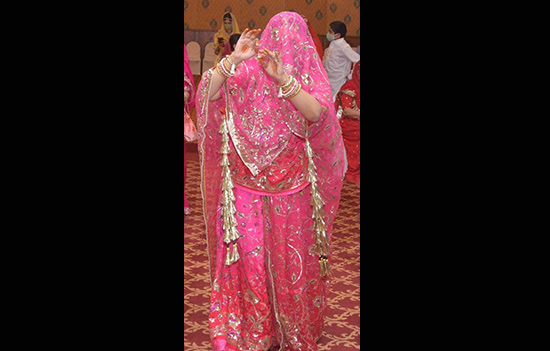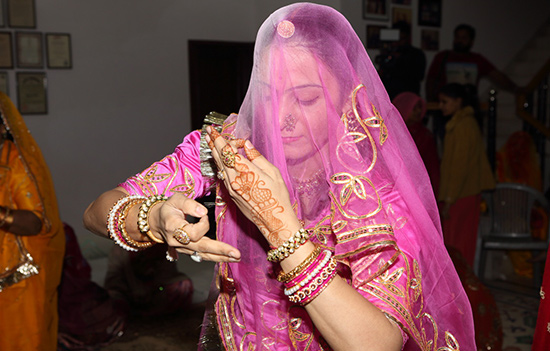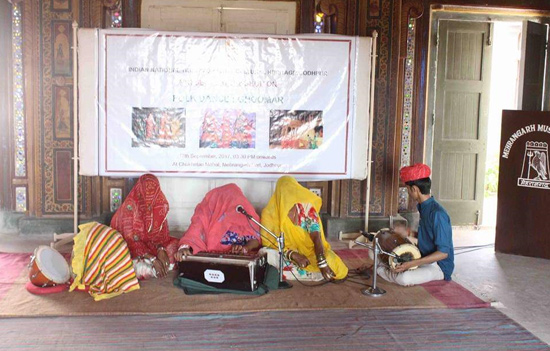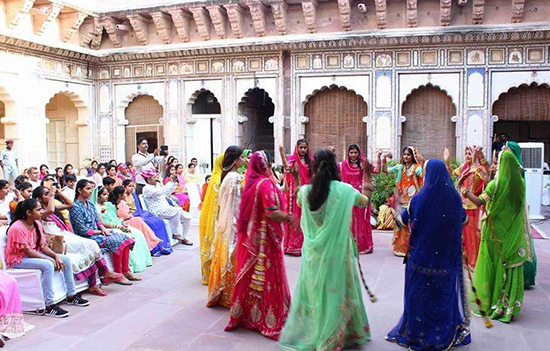- Read about the significance and how of the Ghoomar dance form, see videos at end and author contacts if you wish to learn Ghoomar.
Any art that we look around is an expression of our feelings. Dancing too is an art and feelings are expressed in the form of various moves and expressions. If you pick up any folk dance or folk music of any region, it has its own charm. It speaks about the culture of that place, their traditions and about their geographical conditions as well. The costumes that are worn for performing the folk dance indirectly communicates the traditions related to that region. Isn’t it interesting to note that our culture communicated so much through non - verbal communication?
In 2013, an online
travel advisory survey ranked ‘Ghoomar’ 4th among world’s top ten local dances. Hula, Hawaii, United States was ranked 1st in this
survey. This was the only folk dance ranked in top 10 from India.
Coming from the Rajput community of Rajasthan, I have grown up watching ‘Ghoomar’ at our
various festivals, personal celebrations or for that matter weddings. ‘Ghoomar’
is synonym to expression of happiness. It is also interesting to note that we
have never been trained for our folk dances. The trend of learning folk dances
has now evolved with time but naturally it is imbibed in our genes or in our
memory. We learn by watching it since childhood, by our mothers, aunts or elder
sisters.
The term ‘Ghoomar’ means twirling movement with the swirling ‘Lehanga’ (Long flaired skirt). This doesn’t necessarily mean that this dance is supposed to be done in a group or more than one woman. This can either be performed solo or in a group. The term ‘Ghoomar’ refers to the movement of the long flaired
skirt as more the number of flairs, more is the swirling movement.
The dance is
visually soothing to the eyes, the delicate moves increases the charm of the
elegant dance. You have to be flexible while performing this dance. One cannot
be stiff and perform this dance.
When women perform this dance at their in-laws’ place, they put a ‘Ghoonghat’ and perform.
The colorful Rajputi poshak, (costume) worn for the dance adds on to the
beauty of it. The dance majorly comprises of the swaying hands movement and the
tapping of the foot. ‘Ghunghroos’ are worn that provides magical sound
effect while the women taps their feet.
 Performance at a wedding.
Performance at a wedding.
The dance is performed on the folk songs sung by the folk musicians and not on the pre- recorded music. The authenticity lies in the live folk musicians singing and the woman performing ‘Ghoomar’. Again, with time now women do perform on
recorded music as well.

Old records of Marwar state at the Maharaja Man Singh Pustak Prakash and Research Centre, Mehrangarh Fort, Jodhpur mentions that the royal functions, festivals, weddings or any celebrations of the ruler of Marwar were always celebrated with great zeal and enthusiasm. ‘Ghoomar’ used to be an integral part of the celebration and it was performed in the ‘Zenana’ (Ladies) wing. Royal women celebrated the occasion by expressing happiness through dance.
‘Ghoomar’ is an emotion that is why even till date it is performed on various occasions. One very special ritual is the bride’s first dance at her In-laws’ place where all the relatives witness it. It is said that she is considered as ‘Lakshmi’ and her dance is supposed to bring prosperity at In-laws’ house.
Culturally, musical instruments like ‘Dhol’ also plays an important role. That is the reason, at the beginning of a wedding a ritual is to welcome the ‘Dhol’ by performing its pooja. This shows the amount of respect paid to the musical instrument that is used for the celebration. When the wedding rituals are completed, the tradition is to thank the folk musicians by giving gifts.
Some
of the ghoomar songs are -
Mehla Neeche Saa...Laga Do Hariya Bagh.. ,
Gorband Nakhralo..,
Ghoomar Ramva Meh Jasya...,
Mahre Heevde Ro Haar...,
Lal Peeli Ankhiyan...,
Sagar Paani Bharva Jaunsa...,
Jhir Mir Barse Megh..,
Mehandi and many others
 Ghoomar Dance
Workshop organised by INTACH at Mehrangarh Fort
Ghoomar Dance
Workshop organised by INTACH at Mehrangarh Fort
 Practice session in progress at INTACH Jodhpur workshop.
Practice session in progress at INTACH Jodhpur workshop.
If you are
interested in knowing more about it or learning this dance form, please feel
free to write to me at Kalpana.champawat@gmail.com
Read
more about Ghoomar
Author works with The Mehrangarh Museum Trust. Pics 1 and 2 are by author. Pics 3 and 4 credits INTACH Jodhpur chapter.
To see performance
videos
1. Khyati
Foundation (4.42 minutes)
2. Two short videos (1 minute and .49 minutes)
Also
1. Read
about Teej Festival
2. Pics of
Mehrangarh Fort Jodhpur
3. Pics of
People of Marwar
4. Jodhpur RIFF – Folk Festival
5. Making
Rao Jodha Rock Park, Jodhpur and Contribution of miners, the Khandwaliyas
6. The
Best of Marwar in 10 days